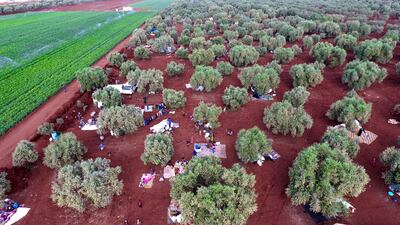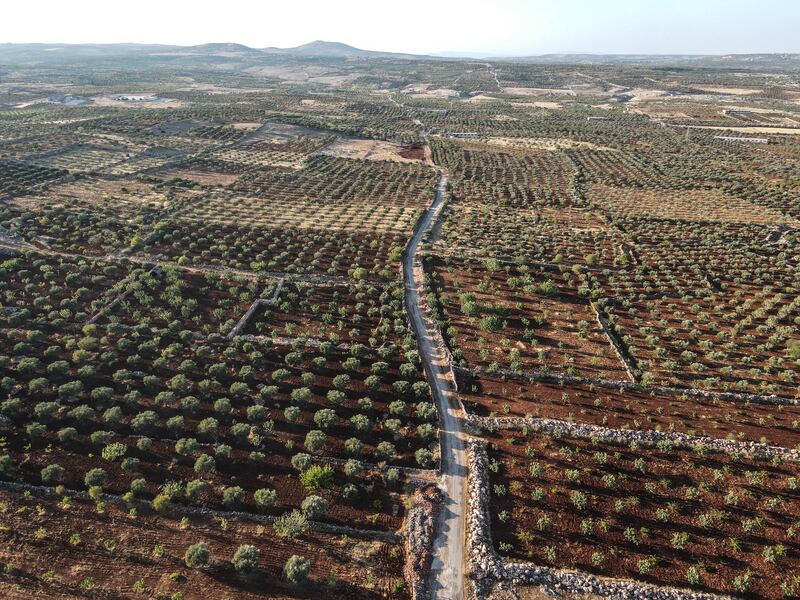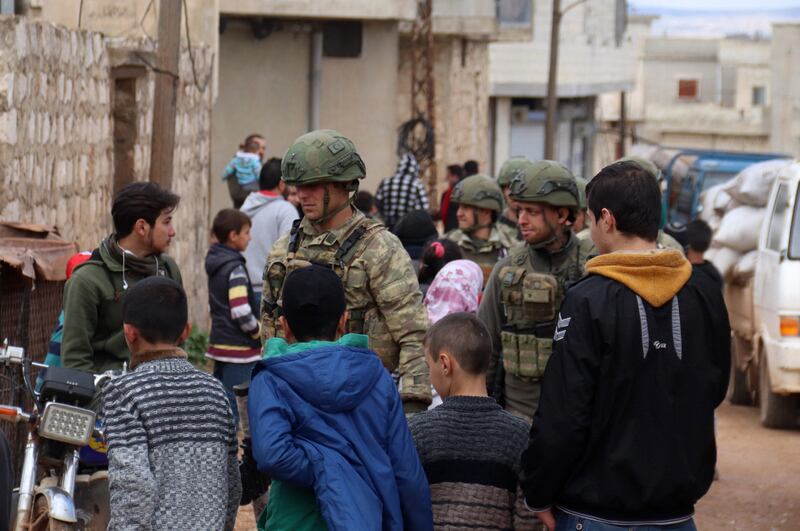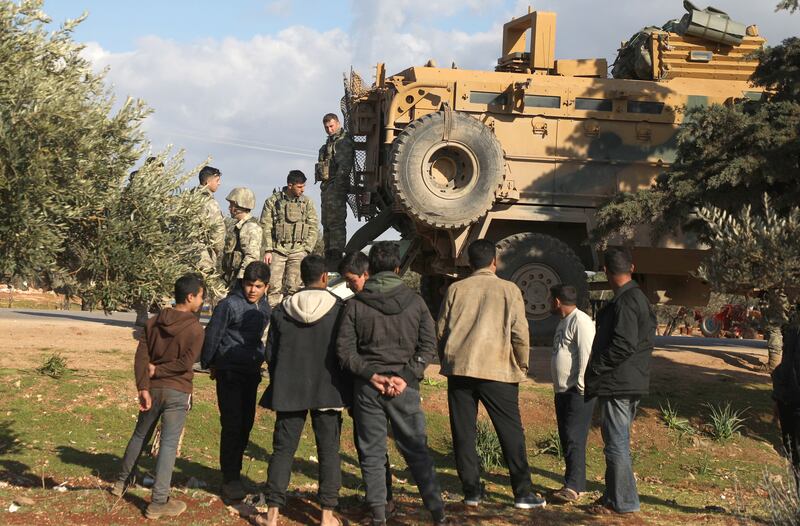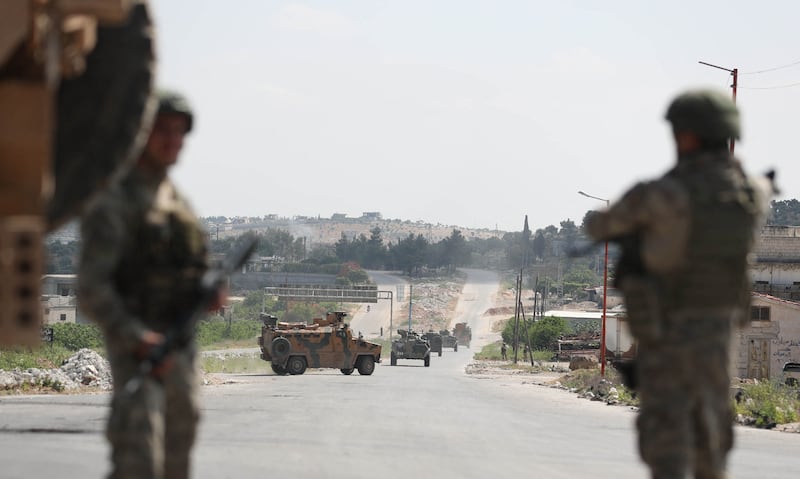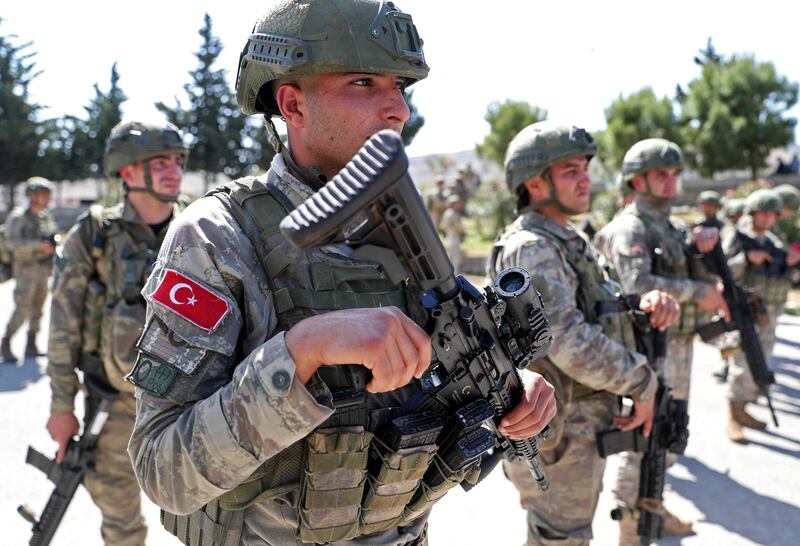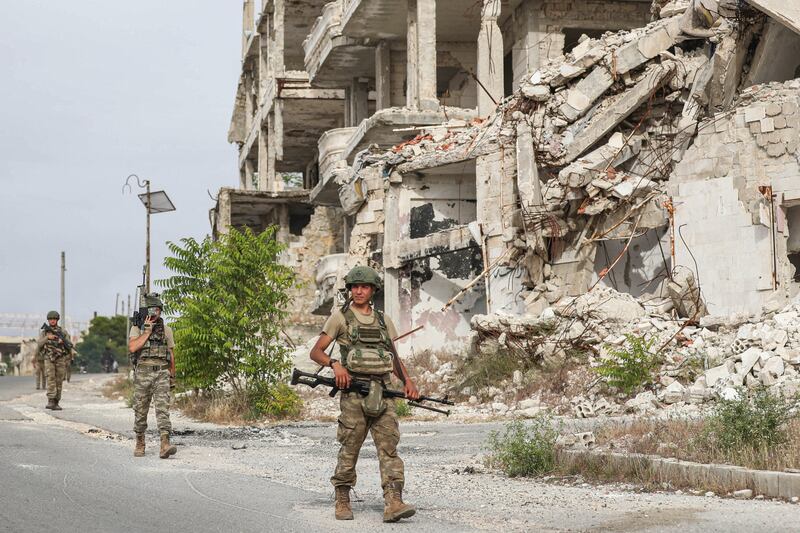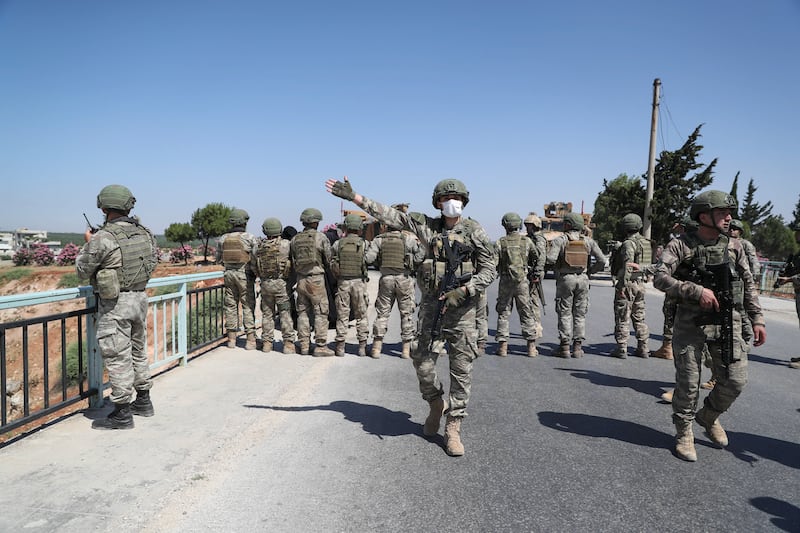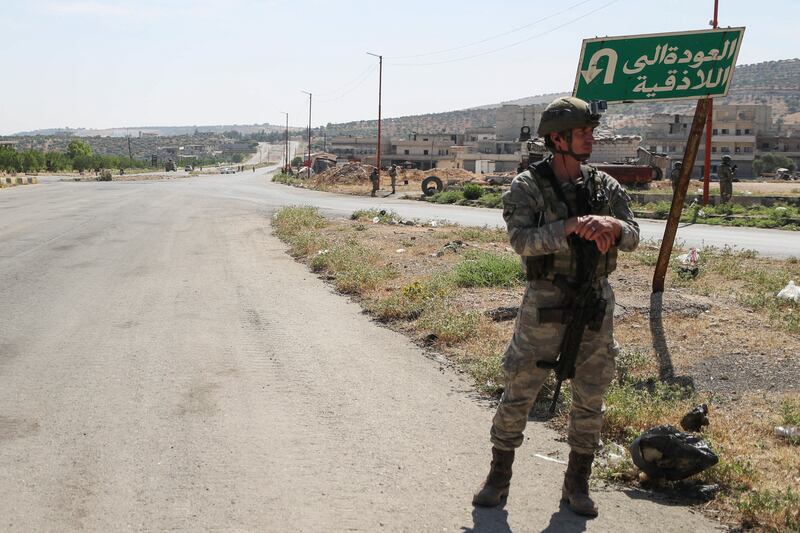Ripe figs fall to the ground from trees in a rugged region under the Turkish sphere of influence in north-west Syria.
The harvest in the Zawiya Mountain region in Idlib governorate was due last month.
Most farmers have fled to areas closer to the border with Turkey in the past few weeks after renewed bombing by the Syrian regime and Russia.
The scene in Zawiya Mountain was described to The National by Osama Al Ayham, a farmer from the town of Al Bara.
“The figs of Jabal Al Zawiya are the best,” Mr Al Ayham says. “But we didn’t dare come near the trees this season.”
He said he fled to the border town of Atma after cluster bombs killed Hussein Abido, his neighbour, and Abido’s teenage son, while they worked the land last month.
The escalation of violence in Idlib and other parts of the north-west echoes a similar build-up in the same region last year between players in the Syrian civil war with ties to Turkey and Russia.
An offensive on Idlib by regime forces and pro-Iranian militias, supported by Russian air power, brought Moscow and Ankara close to war in the first quarter of 2020.
Large-scale violence would affect Turkey’s expansion in Syria and its ability to check advances by Kurdish militias in areas on its border.
It would test limits of Russian support for President Bashar Al Assad’s regime, as Moscow seeks to keep up co-ordination with Turkey in the South Caucasus and the Black Sea regions.
Complex realities on the ground
In the past decade, Idlib and areas in the adjacent governorate of Aleppo have become a laboratory of the internationalisation of the conflict in Syria, and how far big powers can push each other.
Active in the region are factions as disparate as Marxist-Leninist Kurdish militias, Sunni Uighur fighters, the Alawite-dominated Syrian military, and Shiite militias from Lebanon and Iraq that are supported by Iran.
Hayat Tahrir Al Sham, an Al Qaeda offshoot seen as having connections with Turkey, rules most areas in Idlib outside the control of the regime, including Zawiya Mountain.
Rebels who fought the regime and lost, after the 2015 Russian intervention restored large parts of Syria to the regime, regrouped in the past few years.
Under Turkish supervision they formed the Syrian National Army in late 2017, concentrated in the northern parts of Aleppo governorate.
The rebels, and the Turkish military, have been trading attacks with Kurdish People Protection Units (YPG) in the pocket of Tall Rifat, north of the city of Aleppo.
With Russian air support, the YPG captured Tall Rifat from the rebels five years ago,
Strategic motorway
Support by Moscow has been crucial to incremental territorial gains by the regime and pro-Iranian militia in north-west and south-west Syria over the past year.
Ankara sees further regime advances in the north-west as driving more Syrian refugees towards its territory. It is also worried about Russia’s links with Kurdish militias.
Dozens of Turkish army observation points and other fortifications are spread throughout Jabal Al Zawiya, and around the nearby M4 motorway to the north.
The M4 is part of a “security corridor” agreed on with Russia in a deal that curbed hostilities between the regime and anti-Assad forces in Idlib in March 2020, after three weeks of fierce fighting.
But Russia stopped joint patrols with Turkey along the M4 in August last year, citing the possibility of attacks by militants.
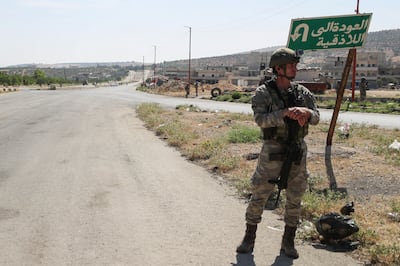
Mr Al Ayham says Hayat Tahrir Al Sham fighters in Zawiya Mountain are dug in, and that their command and control centres are underground.
Before Mr Al Ayham fled his hometown he saw their pick-up-mounted anti-aircraft guns on the narrow road leading to Al Bara.
But a Syrian officer who had defected to the opposition says that Russia appears intent to bomb the region into submission to secure the M4 motorway.
The M4 connects Aleppo, which the regime captured in late 2016, with the Mediterranean coast, where Russia has the bulk of its forces in Syria.
Carving out buffers
The officer says Russia also wants the regime to capture the town of Jisr Al Shughur on the westernmost edge of Idlib.
It is the nearest town in Idlib, not with the regime, to the Alawite Mountains overlooking the coast.
Uighur fighters control Jisr Al Shughur. They made their way there over the course of the Syrian civil war from China, Pakistan and Afghanistan.
Video: Assad's air force strikes northern Syria
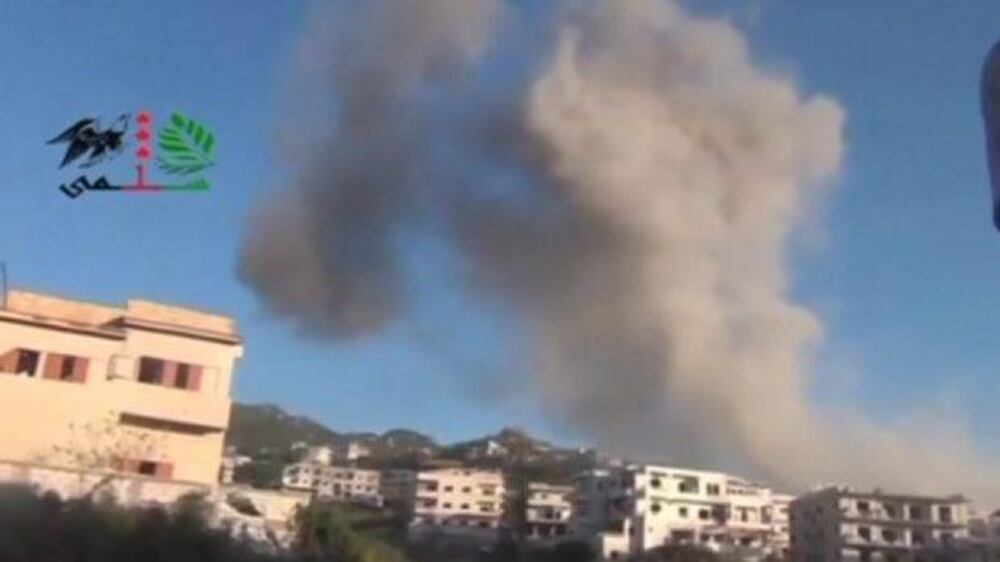
“Jisr Al Shughur, and even Zawiya Mountain, might be dispensable for Turkey,” the officer says. “But Turkey cannot afford to give up more than this.”
He citied Ankara’s need to maintain a buffer zone around Afrin and to prevent another Sunni refugee influx into Turkey.
Afrin was a Kurdish enclave in Aleppo, overrun and depopulated by Turkey and its proxy forces in 2018.
Hundreds of thousands of Syrians, mostly from the country’s majority Sunni, fled to Turkey in the early years of the Syrian civil war. Turkish authorities later prevented entry.
Turkish calculus
In Istanbul, an opposition figure in contact with Turkish security says Turkey’s military posture in north-west Syria “shows that it is ready for war”.
“If the fall of the north-west becomes the popular perception, the refugees will break through the border,” he says. “It is a scenario Turkey cannot afford.”
The region’s population, particularly in Idlib, has grown in the past decade after the crackdown on the 2011 revolt against five decades of Assad family rule, and the ensuing civil war.
Nearly four million people, mostly refugees from across Syria, live in Idlib, compared with the governorate’s one million inhabitants in 2011.
Moscow-Ankara dynamics
Galip Dalay, a Turkey Programme fellow at the German Institute for International and Security Affairs in Berlin says that “the danger of confrontation with Russia” factors significantly in Turkey’s strategy in the north-west.
At the same time, he says Russia seeks to pressure Turkey “without wanting the relationship to reach breaking point".
But “all the indications point to a major escalation” in north-west Syria, Mr Dalay says, pointing out inconclusive talks over Syria between President Vladimir Putin and President Recep Tayyip Erdogan on September 29.
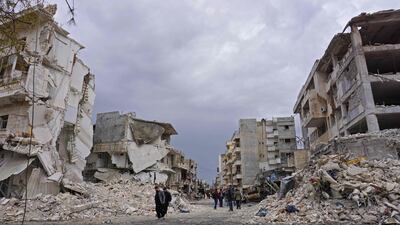
Mr Dalay says the relationship between Moscow and Ankara regarding Syria is marked by “a pattern of military escalation on the ground, and after a while, a new fragile reality”.
Wasteland
The deal in March last year between Turkey and Russia reduced bombing in the Zawiya Mountain region, allowing most farmers to return to their homes in time for the fruit harvest.
Before 2011, a large proportion of Idlib’s figs were exported to Russia, while much of the region’s olive oil was exported to Western Europe.
The picking season for olives is in a few days. But Mr Al Ayham, who owns a grove, does not expect to be back.
“The olives will go to waste,” he says.
